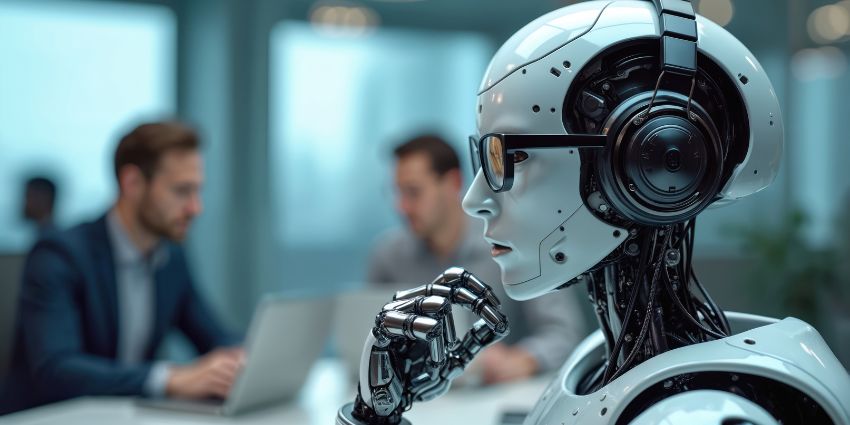At its 2025 ENGAGE conference, Smartsheet unveiled what it calls the “next evolution” of Intelligent Work Management, a fully AI agent-first platform designed to align people, data, and decisions under a single, intelligent layer.
It’s naturally a bold claim, but one grounded in scale. Smartsheet reports that 85 percent of Fortune 500 companies already utilize the platform to manage projects, budgets, and strategy execution. Now, the company wants to help them do it faster and more intelligently, with AI that collaborates, contextualizes, and learns.
Rajeev Singh, CEO of Smartsheet, commented:
“Intelligent Work Management is the operating model for the modern enterprise. We’re delivering AI that’s truly collaborative, securely anchored in customer data and designed to augment human intelligence—ushering in a new era of work by enabling teams to execute with unprecedented speed and precision.”
From Automation to Intelligence: Smartsheet’s AI Agent Revolution
Most enterprises have already automated routine work. The next frontier is intelligent orchestration; AI that doesn’t just execute tasks, but understands the why behind them.
Smartsheet’s new Knowledge Graph sits at the heart of this transformation. Acting as a dynamic data model across the platform, it powers an ecosystem of AI-driven features that help enterprises shift from managing projects to managing outcomes. The first of these is Smart Assist, a conversational AI companion that can design new projects, configure automations, and answer real-time queries about progress and deadlines.
Meanwhile, Smart Flows extends this intelligence to workflow creation itself, enabling teams to build multi-step automations using plain language rather than complex configuration screens.
The intelligence doesn’t stop at workflows. Smart Columns infuse context directly into the platform’s core data structure, allowing cells to categorize, label, translate, or summarize information automatically.
Rounding out this new suite are Smart Agents, digital coworkers designed to reason and act within specific contexts. The first, a Project Manager Agent, continuously monitors progress, identifies risks, and recommends ways to optimize timelines and resource allocation, essentially becoming an AI project coordinator that operates alongside human teams.
All of these capabilities will be governed and configured through Smart Hub, a central control center launching in 2026 that allows enterprises to define how AI interacts with their data, monitor usage, and build their own custom digital agents. For tech buyers concerned about transparency and compliance, it’s a notable shift toward responsible and explainable AI.
Building for Scale, Security, and Strategy
Smartsheet’s overhaul isn’t limited to intelligence. It’s also about infrastructure. For CIOs and COOs balancing speed with control, the company has introduced a range of enterprise-grade capabilities designed to enhance oversight without compromising agility.
Among the most notable is Scenario Planning, which allows organizations to model “what-if” scenarios in real time, exploring the potential impact of strategic changes without disrupting live projects. The Portfolios feature brings standardization and visibility to complex project environments, letting enterprises manage multiple initiatives through shared templates and unified reporting dashboards.
To maintain consistency across large, distributed teams, Dynamic Dropdowns ensure that data remains synchronized and error-free across interconnected sheets, a crucial feature for enterprises managing thousands of concurrent projects. And to strengthen governance, Smartsheet has introduced a Security Score system that quantifies an organization’s security posture, alongside expanded multi-factor authentication options that meet rising compliance and cybersecurity expectations.
Together, these upgrades move Smartsheet beyond project management toward what analysts increasingly describe as an “enterprise nervous system,” a connected operational fabric where AI doesn’t just automate work, but intelligently orchestrates it.
Why Smartsheet’s AI-Powered Intelligent Work Matters to Tech Buyers
For the CIO, the new Smartsheet represents a shift from tactical tool to strategic enabler. Its unified AI architecture offers the control, transparency, and integration required to embed intelligence into core operational processes without introducing risk. The COO sees a different kind of benefit: executional velocity, fewer silos, and the ability to respond to change in real time. Meanwhile, for the CFO, the message is clear that adaptive intelligence promises a measurable ROI through efficiency gains and more predictable resource allocation.
Perhaps most crucially, Smartsheet’s approach to responsible AI, anchored in customer data and controlled by the user, offers a degree of reassurance in a landscape where many enterprises remain wary of opaque copilots and third-party data exposure. By giving organizations the tools to manage, audit, and customize their AI agents, Smartsheet positions itself as a platform that’s as much about trust as it is about transformation.
Key Takeaways
The true measure of digital transformation is fundamentally about how intelligently work adapts. Smartsheet’s pivot suggests the next great competitive differentiator won’t be efficiency, but enterprise cognition: the ability to think, learn, and act as one.
Smartsheet Gets Smarter: New AI Update Targets Real Business Work Management Pain Points
Smartsheet’s previous momentous platform overhaul in July featured AI-driven intelligence and enterprise-grade infrastructure being brought together.
Designed to make work genuinely easier to manage, it introduced AI formula generation, automated charting, and a powerful knowledge graph that links people, projects, and data. Smarter onboarding, enhanced tables, and new timeline and scenario planning tools also help teams plan, adapt, and execute at scale.







